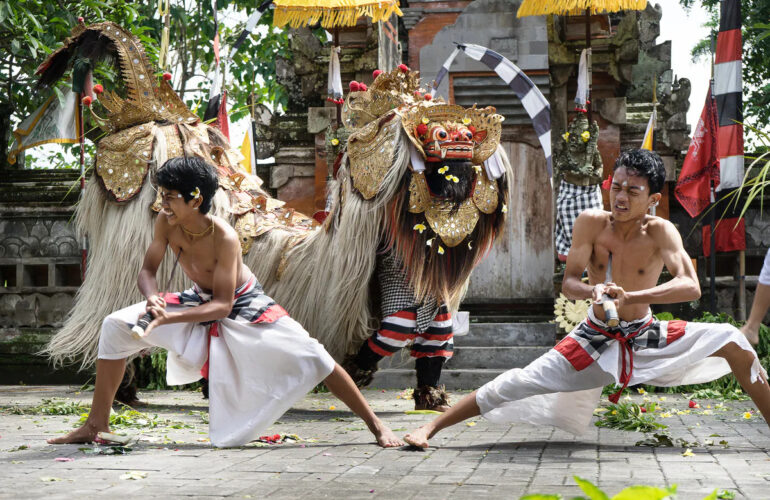Nestled in the heart of Indonesia, Bali boasts breathtaking landscapes and a rich and vibrant cultural tapestry. Balinese culture is a treasure trove of symbols and meanings woven intricately into everyday life and sacred rituals. Each element holds significance beyond aesthetics, from the ornate carvings adorning temples to the mesmerizing dance performances. Delving into the depths of Balinese cultural icons reveals stories, beliefs, and traditions that have shaped the island’s identity.
Guardians of the Divine: The Enigmatic Barong
The Barong is one of Balinese culture’s most recognizable and revered symbols. Often depicted as a mythical lion-like creature, the Barong is more than just a theatrical mask used in traditional performances. It symbolizes an ongoing conflict between forces of goodness and darkness, a cosmic challenge deeply revered in Balinese Hinduism. The Barong is believed to protect the island from evil forces and bring prosperity to its people. Behind the elaborate costumes and dynamic dances lies a deep-rooted belief in this cultural icon’s power to safeguard the Balinese community’s spiritual and physical well-being.
Dance as Devotion: Exploring the Legong Dance
Balinese dance is visual poetry that speaks volumes about the culture’s values and beliefs. The Legong dance, characterized by its intricate movements and expressive gestures, holds a special place in the Balinese performing arts. This dance form often narrates mythical tales and epic narratives from Hindu scriptures. Beyond its artistic grace, the Legong dance is a form of devotion, serving as a medium to honour deities and connect with the divine. Thoughtful choreography of gestures and steps conveys emotions and stories, uniting the physical and spiritual realms seamlessly.
Read More:
Eco-Tourism: Embrace Nature’s Magic Up Close and Personal
The Most Incredible Vacation Destinations You’ve Never Heard Of
Sacred Geometry: Patterns in Temple Architecture
The architecture of Balinese temples is a testament to the meticulous attention given to symbolism and sacred geometry. Each architectural element carries deep meanings, from the towering gateways (candi bentar) to the intricately carved stone reliefs. The tripartite division of the temple symbolizes the cosmic balance of gods, humans, and demons. Intricate carvings often depict mythological tales and moral lessons as visual reminders of the island’s spiritual heritage. The harmony between the architectural design and spiritual symbolism creates spaces that invite contemplation and connection.
The Offering Ritual: Making the Mundane Sacred
Balinese daily life is punctuated by offerings known as “canang sari.” These meticulously crafted offerings include colourful flowers, rice, and incense in woven palm leaf baskets. Making and placing these offerings is a deeply ingrained ritual that honours gods and spirits, fostering a sense of gratitude and mindfulness. This practice exemplifies that even the most straightforward actions can be imbued with sacredness. The canang sari beautifies the streets and homes. It serves as a reminder of the importance of gratitude and humility in Balinese culture.

Continuity Amidst Change: Modern Interpretations
While Balinese cultural icons have deep historical roots, they have evolved to resonate with modern sensibilities. Contemporary artists and performers continue to draw inspiration from traditional symbols, infusing them with new narratives and perspectives. This dynamic interaction between the old and the new ensures that Balinese culture remains relevant and vibrant. It also highlights the resilience and adaptability of a culture that holds its heritage in high esteem while embracing the winds of change.
